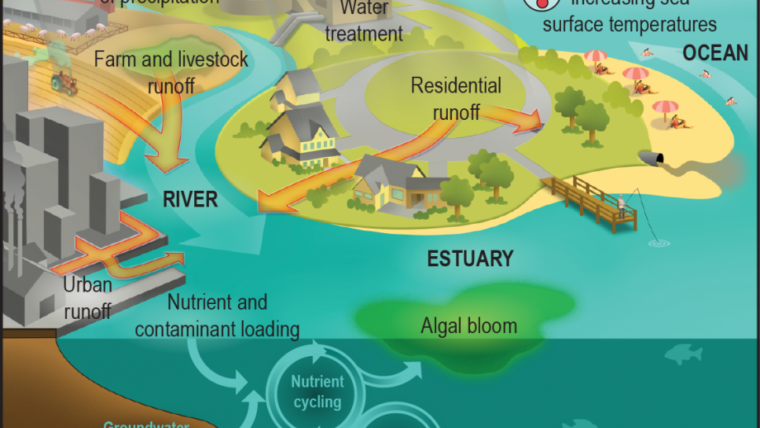Starting next week, the Paris Climate Negotiations will occur. World leaders and their representatives will come together once again to attempt to craft an agreement or treaty that will begin to curve the trajectory of climate warming gases back to a level that will save the planet from devastating consequences.
The following article is a good summary of what will be happening and what is at stake. Read on if you’re interested.
Have questions about next week’s climate talks? Here are 8 answers that might help
Lisa Friedman, E&E reporter
Published: Wednesday, November 25, 2015
What is happening in Paris next week?
Diplomats from more than 190 countries will gather on an airfield in Le Bourget, just outside the French capital, to negotiate a new international agreement on climate change through the United Nations. About 20,000 people, including business leaders, environmental activists and journalists, have been accredited to attend the proceedings, and the talks will draw an estimated 20,000 more to Paris for a series of clean energy and other events happening on the sidelines.
President Obama, Chinese President Xi Jinping and Indian Prime Minister Narendra Modi will be among the heads of state joining French President François Hollande to kick off the opening day ceremony on Monday. They and others are expected to call for an ambitious deal that will avoid a dangerous rise in global average temperatures.
Getting that will be hard, though. Countries’ views remain far apart on a number of important issues. The conference runs through Dec. 11 — at least officially — but longtime observers say they are prepared for the negotiations to drag well past that deadline.
Why is this important?
Scientists say getting a global deal now is critical to the planet. A 2-degree-Celsius temperature difference doesn’t sound like much — hardly enough to affect whether or not you wear short sleeves. But on a global scale, it’s big. According to the Intergovernmental Panel on Climate Change (IPCC), if temperatures rise more than 2 degrees above preindustrial levels, it could lead to catastrophic and irreversible impacts. Currently, the world is on a trajectory for a rise of nearly 5 degrees. To put that in perspective, a 5-degree difference would be the difference in temperature between the ice age and the modern era.
Politically, Paris could be the last best chance to nail down an agreement. Few leaders are willing to discuss the possibility of failure so close to the talks, but U.N. climate chief Christiana Figueres said as much last year.
“This is it, my friends,” she warned on the sidelines of a New York summit aimed at building momentum for Paris. “I guarantee you, if we do not succeed in 2015 … it will take 10 years to get everyone around the table again” (ClimateWire, Sept. 25).
So will the Paris agreement keep temperatures below the 2-degree threshold?
No.
Countries have submitted climate targets to the United Nations, known as intended nationally determined contributions, or INDCs. The good news, analyst say, is that more than 170 countries representing more than 90 percent of global emissions have put forward plans. That includes the United States, European countries, Australia and other major industrialized countries, as well as China, India, Brazil and other emerging powers whose emissions are rapidly rising. Beyond that, dozens of poor and vulnerable countries, from Djibouti to the Philippines, have put forward mitigation plans, as well.
That’s huge, both politically and from a scientific standpoint, experts say. But it’s still not enough. A recent U.N. analysis found the collective efforts, if met, would lead to a temperature rise of 2.7 degrees (ClimateWire, Oct. 30). Another one found there will still be as much as 12 billion tons more greenhouse gas emissions in the atmosphere by 2030 than there should be to keep to safe limits of warming (ClimateWire, Nov. 6).
Then what’s the solution?
Several countries, including the United States and the European Union, as well as many environmental groups and business leaders, say in order to stay on the 2-degree pathway, the Paris deal must include a way to regularly review and ratchet up targets. That means every five years — starting in 2020 — countries would have to come back to the negotiating table and lay out new and stronger emissions commitments.
“We already know that Paris will likely be judged to be falling short,” Elliot Diringer, executive vice president for the Center for Climate and Energy Solutions (C2ES), said recently. But, he said, establishing “a series of moments” when countries pump up ambition creates “the possibility of setting in motion a virtuous cycle that can bring us closer to achieving our climate goals.”
The problem, of course, is that not all countries see eye-to-eye on the idea. China and India, in particular, are wary of signing up to anything they feel imposes on their national sovereignty. For one thing, both countries’ current targets set out the emissions cuts they will reach by 2030 — and those targets weren’t easy for their governments to develop. So, Jake Schmidt of the Natural Resources Defense Council noted, asking them to come back in five years and improve that target is a difficult request.
Others note that developing countries, particularly India, are also nervous about committing to higher and higher carbon cuts without an assurance from wealthy countries that they will help fund the transition to clean energy.
How much money are countries asking for? And who will pay?
Developing countries say they need much more assistance than they are currently receiving.
Back in 2009, during the Copenhagen, Denmark, climate summit, wealthy countries vowed to mobilize $100 billion annually in public and private dollars by 2020. A recent study by the Organisation for Economic Co-operation and Development found they’re about two-thirds of the way to that goal. Some activists and developing countries dismiss that finding, though, because they do not believe loans and private investment dollars should be counted as climate assistance.
For Paris, developing countries say they want a pledge that the $100 billion commitment will be a “floor” and not a ceiling of climate aid, and that it will be scaled up over time. That’s not yet something wealthy countries are prepared to sign up for. Asked yesterday if the United States could agree to such language, Todd Stern, State Department special envoy for climate change, said, “We don’t know yet is the answer.” But, he said, “we certainly see robust financing continuing.”
Meanwhile, countries are still being encouraged to put up money to the Green Climate Fund. Launched by the United Nations but governed by an independent board, the fund currently has about $10 billion. The United States has pledged to it $3 billion over four years, but Republicans in Congress have vowed to block that money from being appropriated.
What is Congress’ role here? Can Republicans block a Paris agreement?
The consensus among lawmakers and legal experts alike is that opponents of a climate deal in Congress cannot block an agreement in Paris. But that doesn’t mean they can’t make things difficult (ClimateWire, July 9).
Republican opposition is playing out on multiple fronts. First, there’s the money. GOP lawmakers say they are dead set against putting U.S. dollars toward the Green Climate Fund. To make matters even more difficult, on Dec. 11 — the final day of the U.N. talks, when fights over everything, particularly money, will be coming to a crescendo — Congress will be using a stopgap spending bill to send a message to Paris. It’s not clear yet what climate-related riders might attach themselves to the omnibus bill, or if Obama will veto a measure that blocks his climate priority.
“The Green Climate Fund is a priority for the president, and we have seen encouraging signs,” White House Deputy National Security Adviser Ben Rhodes said yesterday. “We don’t want to get too far ahead of the negotiations as they move forward, but it is a clear priority for the president.”
Meanwhile, in a series of resolutions, Republicans are challenging the administration’s assertions that the Paris deal can avoid Senate approval. Finally, lawmakers are attacking the cornerstone of the U.S. pledge in Paris — the EPA’s Clean Power Plan rule aimed at cutting carbon emissions from existing power plants.
Expect to see several GOP lawmakers in Paris next week arguing that the United States can’t deliver on its promises, as well as a number of Democrats countering that message.
Will the agreement be legally binding or not?
Welcome to the world of the U.N. climate negotiations, where the same word can mean many different things to many different people.
The Obama administration wants to see a deal that is “legally binding” — up to a point. Under the U.S. vision, countries would be obligated to submit to the United Nations proof that they have put in place measures to meet their climate targets and are making headway in doing so. But the targets themselves would not be binding. That is, the United States would not be beholden to any outside enforcement body if it fails to meet its goal of cutting emissions 26 to 28 percent below 2005 levels by 2025, and China similarly would not face sanctions if it fails to peak emissions by 2030.
It may seem like a slight distinction, but it’s key. Under the Obama administration’s reading of the law, only an agreement containing legally binding “targets and timetables” must come before the Senate for advice and consent.
Avoiding that, the United States argues, also helps avoid a second problem: China, India and other major emerging powers don’t want to be bound to targets, either.
Many small and vulnerable developing countries are pushing for a full-blown treaty, as is Europe — at least to publish. Behind the scenes, though, many Europeans say they are confident of coming to a deal.
“We are trying to drag the administration as far as possible,” one European diplomat said recently. Europeans, he said, “love Barack Obama. They are not willing to make a crisis with the U.S., and they are not going to block at the end.”
Even some environmental groups say at this point they believe the final deal will be something of a legal hybrid, and they are comfortable with that.
“We understand the situation, and we understand what is and isn’t possible in the U.S. political context right now,” said John Coequyt of the Sierra Club. He said his group and many other American environmental groups are working to convince their counterparts in developing countries to support a compromise.
What’s the level of optimism right now?
Pretty high. The climate talks are coming on the heels of devastating terrorist attacks in Paris, and that seems to have strengthened the resolve of many leaders to both attend the talks and ensure they are successful.
Even before that, though, leaders from across the globe had remarked on how different the run-up to Paris was from the last time countries met to design a new climate agreement in Copenhagen in 2009. While there are still strong differences of opinion on dozens of issues, everyone seems to be confident that a deal will ultimately happen.
“The stars are more aligned right now to reach an agreement than I have ever seen happen before,” Stern said yesterday. He said there is “no comparison” between now and Copenhagen.
“We are riding on the wave of those 170 targets that have been submitted, and we know countries are interested in getting this done,” he said. “We have this opportunity. We have this moment. Countries are going to have to be willing, starting now, starting today, starting yesterday, to depart from some of their fixed positions to seek common ground.”
Twitter: @LFFriedman Email: lfriedman@eenews.net



